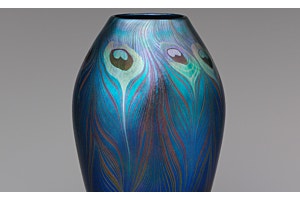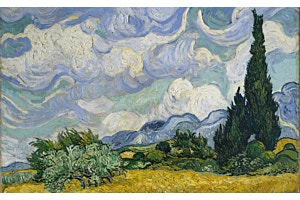
From pensive self-portraits to pioneering nature studies, chaotic biblical scenes to tranquil landscapes, Albrecht Dürer’s (German, 1471–1528) trailblazing body of work both influenced and expanded the very scope of art. In celebration of his enduring appeal, we’re delighted to introduce a new scarf featuring one of his most exciting images in The Met collection.
Dürer was born into an age of discovery and creation; his contemporaries included Leonardo da Vinci (Italian, 1452–1519), Michelangelo (Italian, 1475–1564), and Raphael (Italian, 1483–1520), whose observant eyes and inquiring minds led to monumental revelations in the fields of art and science. Dürer was no exception—his insatiable curiosity and propensity for innovating led to a number of remarkable art historical “firsts.”


Dürer’s intense self-scrutiny (and, perhaps, admiration) is apparent in the proud paintings he made of his own likeness. A drawing (shown above) from 1493, housed at The Met, served as the preparatory sketch for one of the earliest independent self-portraits in Western painting, now at the Musée du Louvre, Paris. But Dürer hardly confined himself to the mirror—the artist embarked on multiple adventures abroad.


In Alsace, he studied the engravings of Martin Schongauer (German, ca. 1435/50–1491), who was considered the most important Northern European printmaker until Dürer came along and elevated the medium to a fine art form.


In Switzerland, he utilized the city of Basel’s burgeoning printing industry to circulate his early illustrations.
From the Italians he honed his understanding of human anatomy, which animated his works with unparalleled vigor. (Later on, Dürer would publish essential treatises on human proportion and geometry, the latter of which included the first scientific consideration of perspective by a Northern European artist.) By the late 15th century, Dürer’s notable skill was duly recognized by patrons and fellow artists.


But it was The Apocalypse (1498)—one of the first books to be both designed and published by an artist—that became Dürer’s first significant masterwork. Across 15 woodcuts, Dürer vividly illustrates the stages of the apocalypse as prophesied by John the Apostle in the Book of Revelation.


While earlier portrayals of the subject were supplemental to the text, Dürer’s frenzied, frightening pictures consume the page—and the viewer.


The unwavering vitality of Dürer’s imagery inspired us to mine The Met’s extensive holdings of his work for an outstanding piece that would translate into a stylish contemporary design. Just in time for spring, we’re delighted to introduce the Dürer Apocalypse Unisex Oblong Scarf, a goes-with-anything monochrome accessory made from a soft and lightweight wool-cashmere blend. It presents an action-packed detail from The Four Avenging Angels (1511), a thrilling woodcut belonging to a later Latin edition of The Apocalypse.


The Four Avenging Angels envisions a scene of drama and danger as four armed angels descend from the heavens to obliterate a third of humankind, an army of warriors on ferocious, fire-breathing beasts in tow. The upper half of the piece, however, stands in stark contrast to all the earthly pandemonium. Dürer’s depiction of the heavens accords with the biblical text, but in the terrestrial realm, his careful creative license amplifies the mayhem.


The Apocalypse was, ironically, just the beginning for Dürer, who went on to produce numerous masterworks—many of which are housed at The Met.


“Whatever was mortal in Albrecht Dürer lies beneath this mound,” declared the artist’s epitaph upon his death in 1528. But the hundreds of surviving drawings, prints, paintings, letters, and diary entries that meticulously document his travels, discoveries, scientific perspective, and artistic judgement provide a lasting cumulative portrait of this extraordinary figure.
Shop the Dürer Apocalypse Unisex Oblong Scarf and the rest of our spring collection, all inspired by storied artworks and objects in the Museum’s holdings, in-store and online.







